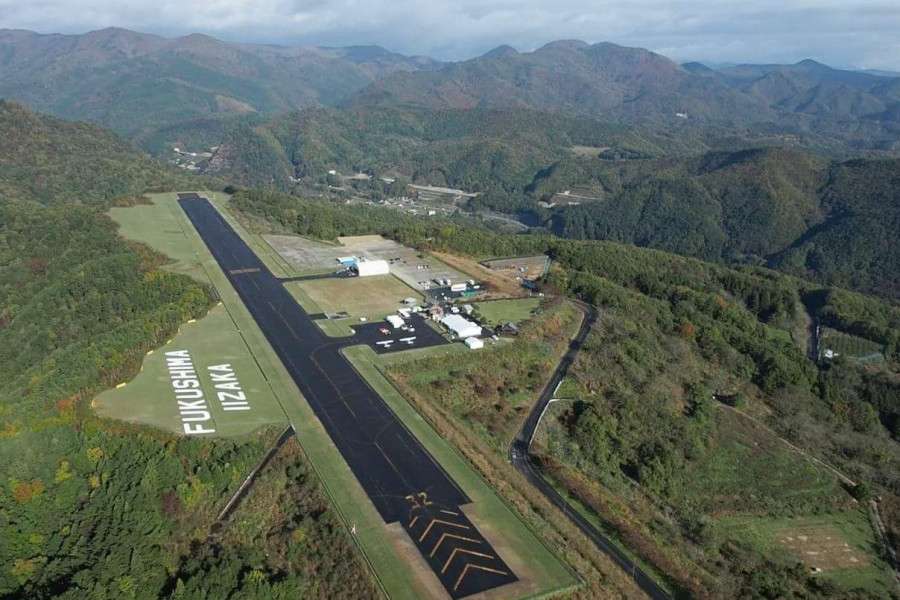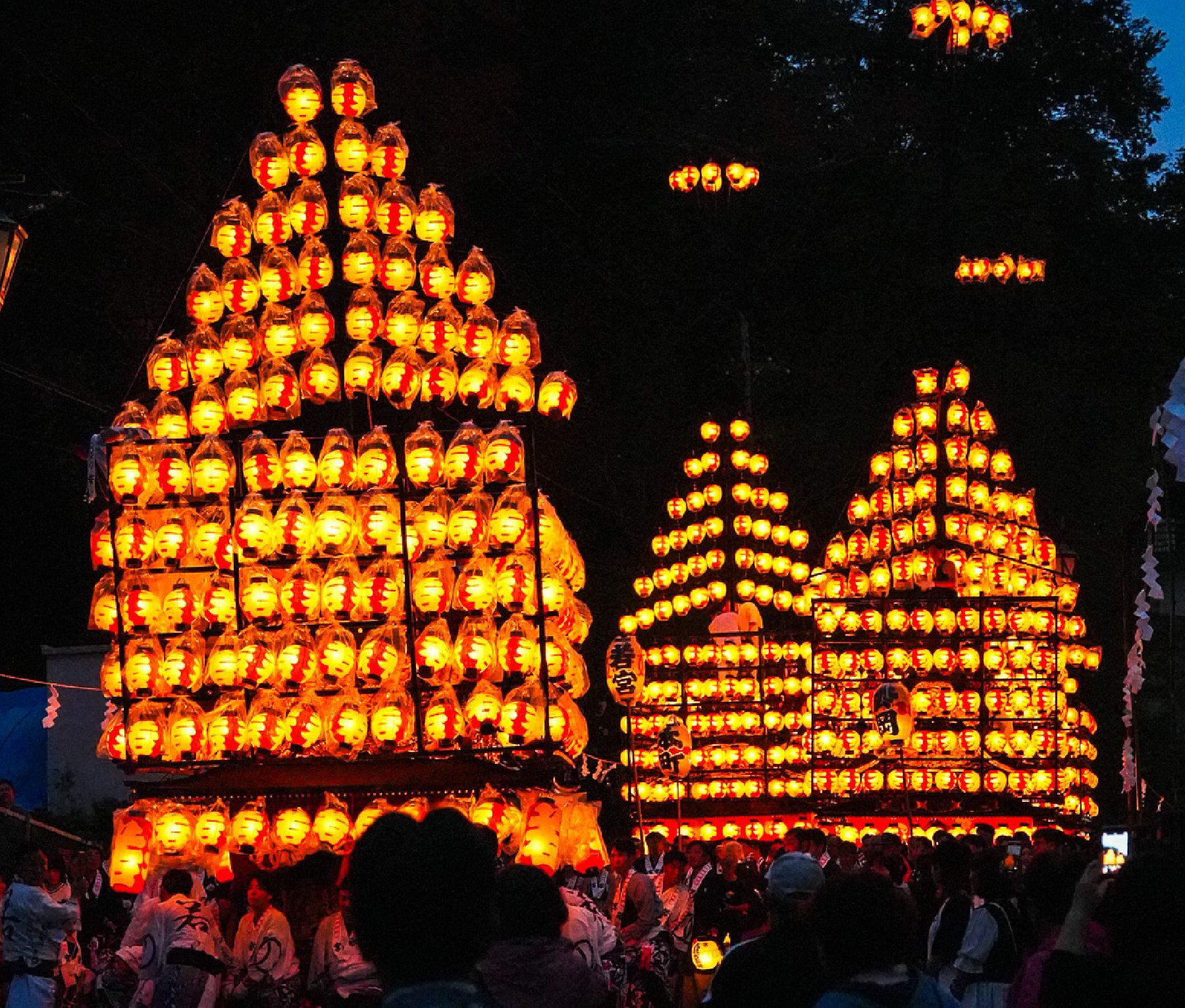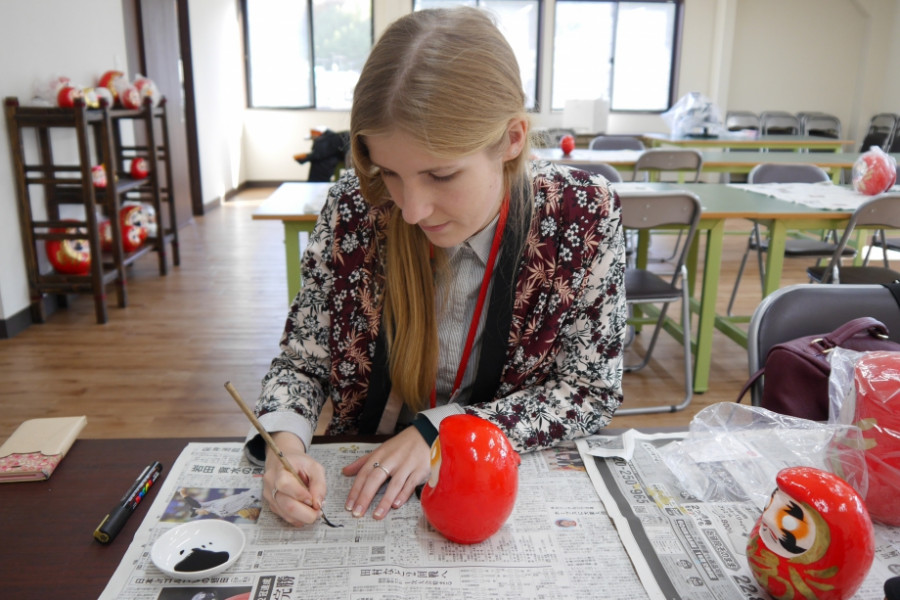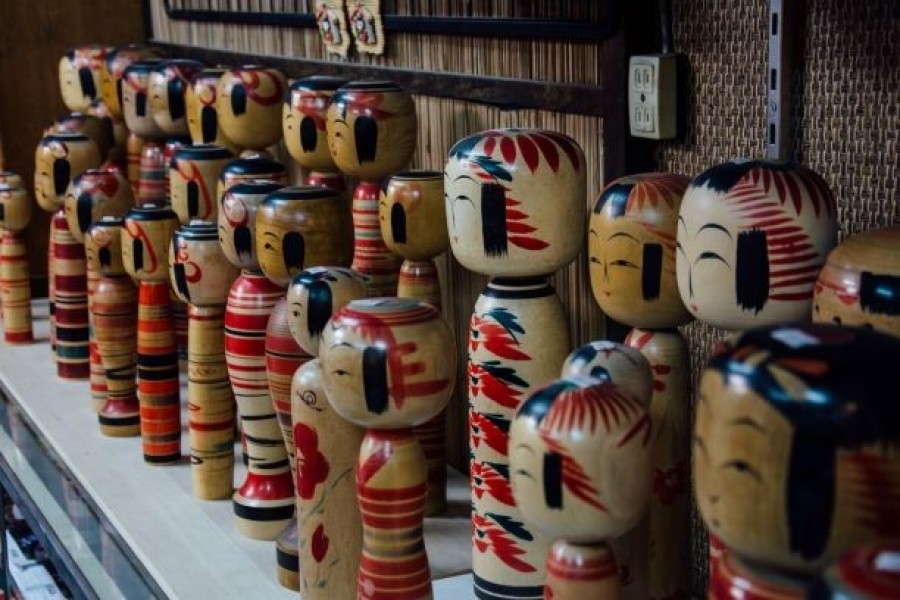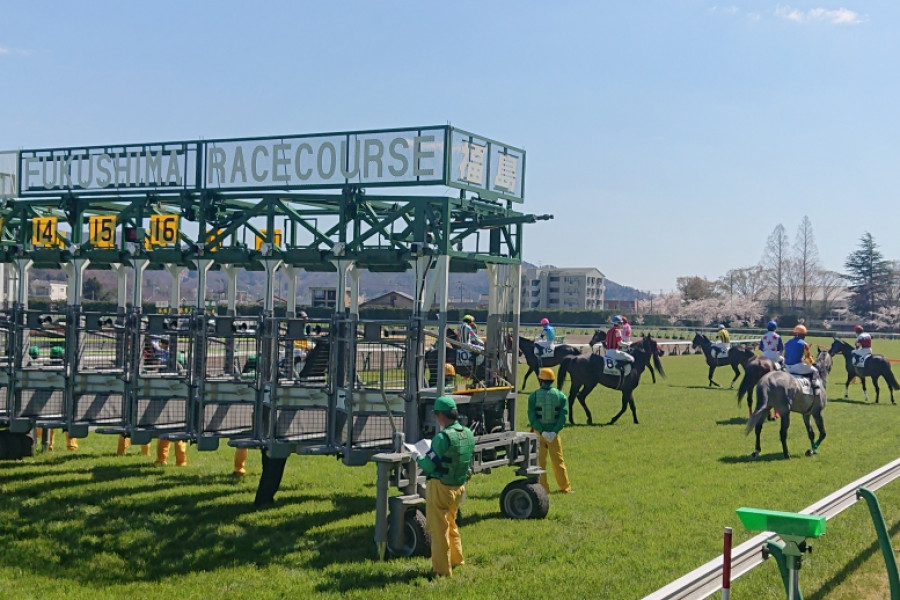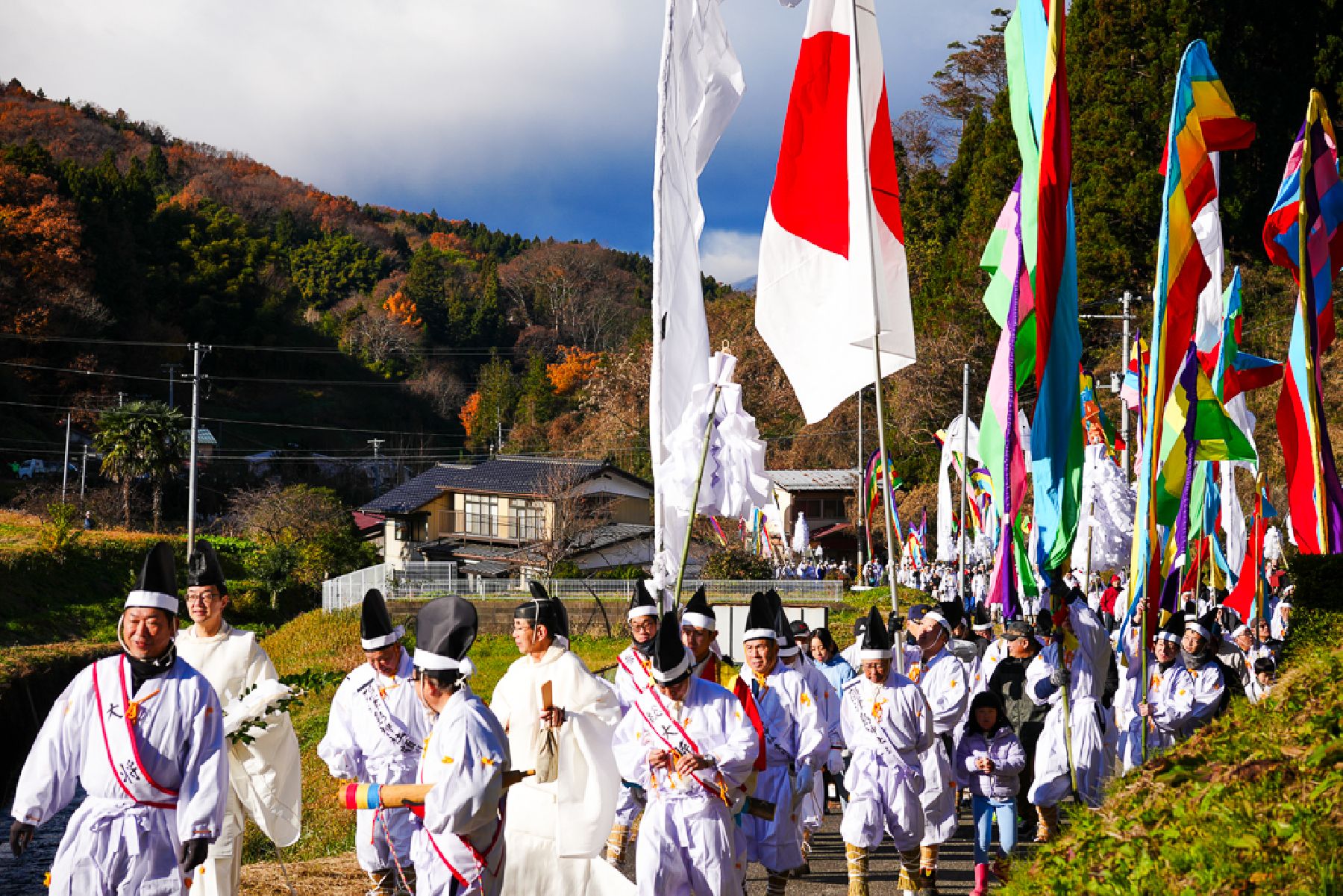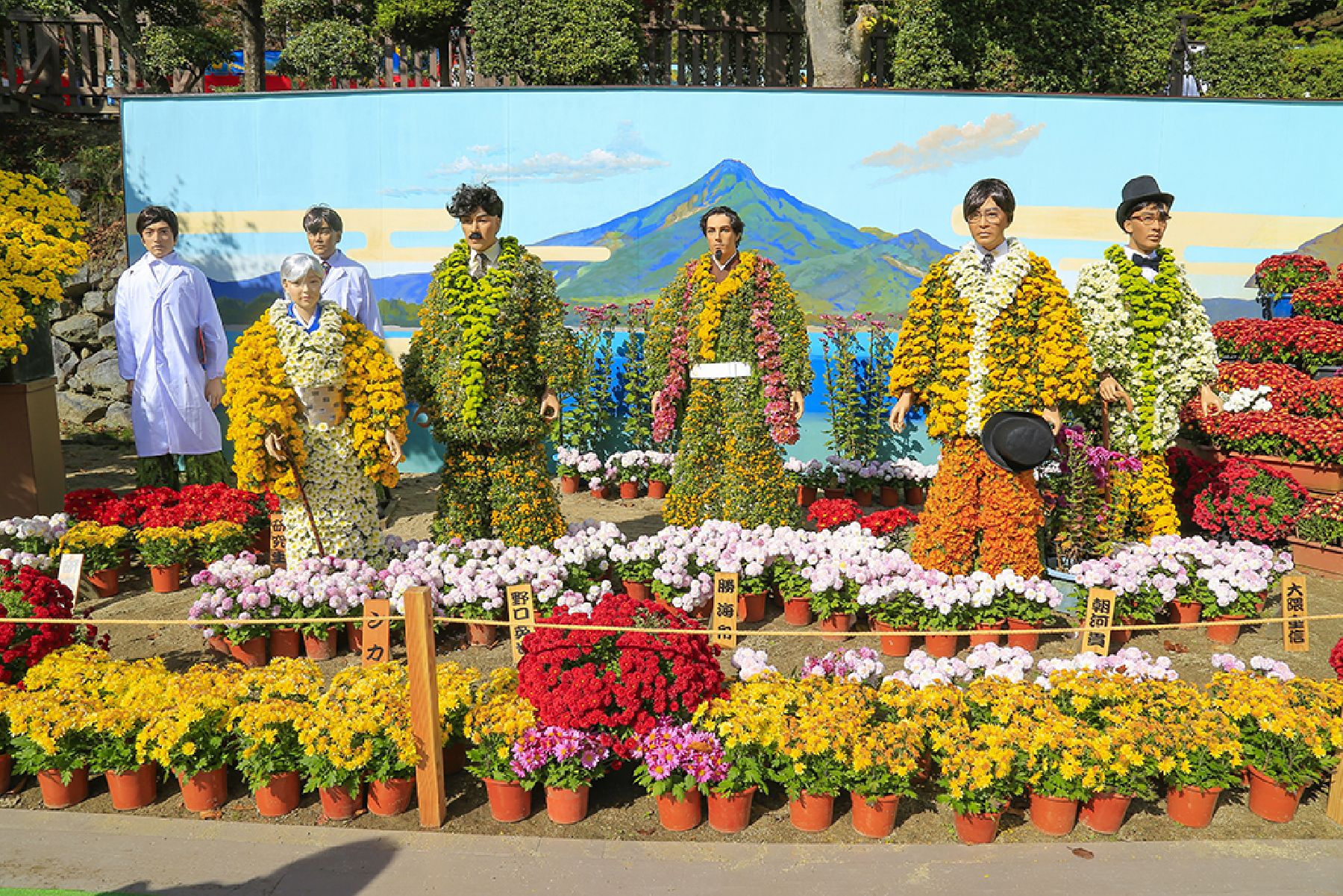The Nihonmatsu Lantern Festival is held yearly on the first Saturday, Sunday, and Monday of October. The 2025 festival was held on Saturday 4th, Sunday 5th and Monday 6th.
Check the Nihonmatsu Tourism Association website for route maps of the lantern floats.
The highlight of the festival is the procession of festival floats during the first evening. Seven large festival floats adorned with lanterns and filled with locals playing taiko drums make their way through the streets of Nihonmatsu City, filling the streets with festival music as they move. The final destination for the floats is the Nihonmatsu Shrine.
The festival traces its roots back to 1643, when Niwa Mitsushige became the lord of the Nihonmatsu clan. Believing that fostering religious piety was a core tenet of strong government, Lord Niwa had Nihonmatsu Shrine built the following year, and opened its gates for anyone in the domain to visit. It’s said that in the first festival, the young people of the town carried a portable shrine (mikoshi) through the streets - in an era where there was a strict class system in place, encouraging widespread religious fervour in this sense was a progressive approach.
As a result, historians say the local people came to greatly love and respect their lord, and before long the festival grew into a magnificent spectacle including dancing, huge drumming floats and hanging lanterns. The tradition has continued to this day, where the beautiful illuminated floats rolling through the streets is the backbone of an important yearly event for local people.
